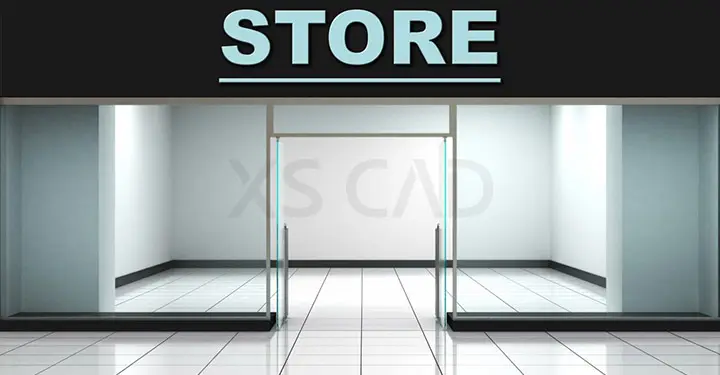Our Articles

The Importance of Automated Lighting Control Systems in Retail
Dynamic retail lighting is an important factor in successful retail sales. Creating a relaxing atmosphere for customers encourages them to stay in the store longer and examine the merchandise. The longer people stay, the greater chances they will pay. The right lighting can contribute to the staying power, and ultimately productivity, of a retail space by creating a unique façade, with attention-grabbing window displays. Automated lighting controls can set the mood in retail spaces to welcome customers and keep them browsing. High-quality retail space planning, retail BIM modelling services and electrical CAD drafting services, using BIM outsourcing methods, can help design automated lighting control systems to highlight brand elements.
A lighting system that can automatically adjust the output of a lighting device or devices is an automated lighting control system. This can be based on time of day, the sunrise or sunset, and it can be altered for different seasons. It can also be controlled by occupancy sensors.
These changes in lighting levels may influence moods, draw attention to architectural details, illuminate art or branding and even drive purchases. Designers also use lighting automation controls to enable customers to enjoy luxury spaces. Lighting automation adds controls in retail outlets, making it more intelligent than just switching lights on and off. These systems can monitor weather forecasts, occupancy rates, customer preferences, building location, etc. for energy efficiency and improving the comfort of occupants.
In addition to adding multi-zone lighting control for fixtures and signage, automated lighting systems have several benefits, such as:
Sustainability & Savings
They analyse and optimise HVAC and electrical system performance, resulting in up to 50% energy savings.
Improved Interior Experience
They ensure occupant health, well-being and comfort all year round by tracking weather and occupancy.
Improved Management
They can monitor and manage energy consumption from smartphones, desktops or laptops. By examining building orientation and weather, they help run the system only when required.
Back-up
Each node in the system can operate independently. If there is no connectivity, the system reverts to standalone operation.
Remote Control
Web and mobile apps can manage the system, and scheduling changes can be made with a single click from anywhere, increasing efficiency.
So, how does it work?
Typically, automated lighting systems consist of a main brain or controller, dimming technology, user interfaces and capabilities for integration.
These powerful automated lighting systems integrate lighting, commands and HVAC and security systems. Using single layer user interfaces, keypads and touchscreens, these systems are user friendly, and the programming software is intuitive, so integrators can easily use and update it. While accessing these systems through mobile apps, the lighting can be controlled from just about anywhere.
Such systems control lights that range from incandescent and fluorescent to LED light sources, including forward and reverse phase source dimming, as well as 0-10 VDC, PWM and DMX control.
Controlling Devices
Simple switches, advanced integrated systems made up of user interfaces, sensors, controllers, drivers and software can all be used to control automated lighting systems. Two types of solutions are ‘plug and program’ and ‘plug and play’.
Retailers may also invest in custom-designed systems.
Benefits of Automated Lighting Control
A range of benefits result from using automated lighting control systems in retail. Using wall-mounted dimmers, comprehensive lighting software systems, LED lamps, incandescent or fluorescent lights can improve the comfort of both customers and retail staff, support routine tasks, facilitate safe and clear space navigation during normal times and during any emergencies and reduce energy consumption.
Retail interiors can be transformed by combining digital show controllers and colour-changing, tunable LED lights to create light shows. The right software can help develop remote, centralised light management with optimum energy efficiency.
For automated lighting control systems to perform at their optimum levels, they require the support of experienced engineering design services resources who can deliver high-quality electrical drafting services and retail construction drawings. In case these services are not easily available locally, retailers can opt to outsource CAD drafting services to offshore destinations.
XS CAD has valuable experience providing support for lighting design and lighting layouts for global retail design companies. Our range of services for retailers include drafting, BIM modelling and visualisation for all stages of the design process. We also provide manufacturing and assembly drawings, Revit family libraries, retail design support alongside our documentation and construction drawing services.

